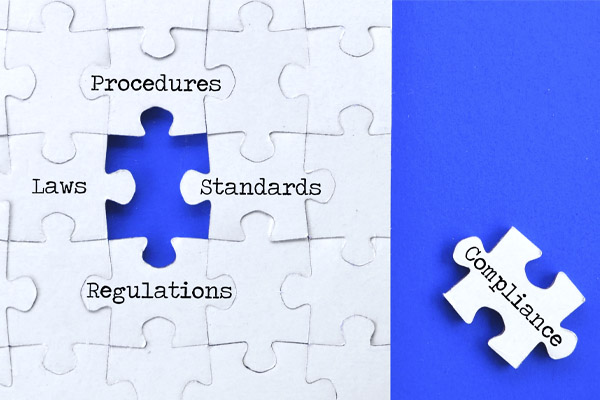Understanding The Different Levels of ADA Compliance

What is ADA compliance? ADA compliance refers to the Americans with Disabilities Act Standards for Accessible Design. The core principles of ADA compliance are to provide essential accessibility online for users with blindness, cognitive disabilities, or otherwise impaired users.
Lack of accessibility can not only alienate people with disabilities from viewing your content, but it can also cost your business thousands of dollars in legal fees.
Luckily, the Web Content Accessibility Guidelines exist to offer clear standards for the web and other types of content.
What are the Web Content Accessibility Guidelines?
The Web Content Accessibility Guidelines, or WCAG, refer to the recommendations and standards provided for creating accessible online content. These global standard criteria are referenced by most national accessibility laws, including the ADA and Section 508 in the United States and the EN 301 549 standards in the EU.
What guidelines are set forth by WCAG 2.0?
According to the Bureau of Internet Accessibility, WCAG has been followed for over 20 years, beginning back in 1991 when WCAG 1.0 was first introduced. These guidelines are continuously changing, and have experienced many iterations over the past few years.
WCAG 2.0 and WCAG 2.1 are the latest and greatest when it comes to accessibility standards, however, these rules will continue to evolve, which is why it's so important to stay on top of new standards
Ultimately, WCAG 2.0 and up are designed to cater to the ever-changing technological advances that present new ways of absorbing information — from smartphones to tablets and other smart devices.
Below are just some of the features/proposed benefits introduced by WCAG 2.1, according to w3.org.
- Improve accessibility for three major groups: users with learning and cognitive disabilities, users with disabilities who use mobile devices, and those with impaired vision
- Including text alternatives for any non-text content
- Captions must be provided for all pre-recorded video content
- Audio-only and video-only content must provide an alternative form of media to present the information
- Color cannot be the primary method of conveying information
Learn more about the varying degrees of accessibility below.
What is Level A Compliance?
Level A features basic web accessibility features for a website to be deemed accessible for users with disabilities. This encompasses basic fundamental accessibility enhancements, such as providing alternatives for non-text content, and ensuring that screen readers can properly parse the digital content. Level A will also confirm that colors and visual elements are not the primary way to convey information. While this level satisfies the basic accessibility principles, it still is typically not considered enough to meet legal accessibility requirements as it only offers the minimum level of accessibility.
What is Level AA Compliance?
Level AA is a step above Level A, offering strong accessibility requirements for most people with disabilities. Level AA includes all of the requirements featured in Level A, but also includes ensuring minimum color contrast ratio, which prevents color combinations that may be difficult to read/see. Level AA also enforces that text can be resizable by different browsers and that there are multiple ways for users to navigate through all public-facing pages on your website. Under WCAG Level AA, customers with disabilities will find it easier to view confirmation pages and error checking on order and registration forms. Ultimately, WCAG AA is usually acceptable in terms of satisfying accessibility legislation, and it is generally the most popular compliance level as it allows for more freedom of design while still making content accessible for customers and employees with disabilities.
What is Level AAA Compliance?
Level AAA is by far the most comprehensive level of ADA compliance, meeting the needs of almost all users and situations with optimal digital accessibility. This level includes the same standards as the Level A and Level AA levels, with some additions. Level AAA includes stricter color contrast standards and requirements providing website owners to provide full transcripts, audio descriptions, close captions, and sign language translations for all audiovisual content. Level AAA also requires brands to include a feature that allows website users to remove background sounds from audio content that contains speech, while also allowing for full keyboard accessibility throughout the entire website. Within this level, there should be no enforced time limit for content, and interruptions like pop-ups would be eliminated. The language of content should be written at an approximately ninth-grade reading level while providing descriptions for any jargon, abbreviations, or words that may be difficult to pronounce when using assistive technology like a screen reader. Level AAA is certainly a challenging level to achieve, especially as a small business with limited team bandwidth, but it’s aspirational and great to keep in mind especially as accessibility requirements for public accommodation continue to evolve.
How Can I Improve My Website’s ADA Compliance?
ADA compliance can be a huge undertaking, especially for a smaller team. WT Digital is well-versed in all things digital content, helping business owners make their content accessible and easily understood by all. Let’s work together to create equitable access for all of your potential customers, and keep your business safe from legal issues.
Learn more about how we can help here.
About the Author
Mark Itzkovitz
Owner
Digital marketing agency founder with 18+ years experience. Former IT expert turned marketing strategist for MSPs and IT providers. Combines tech knowledge and marketing skills to deliver lead generation solutions for business owners.
